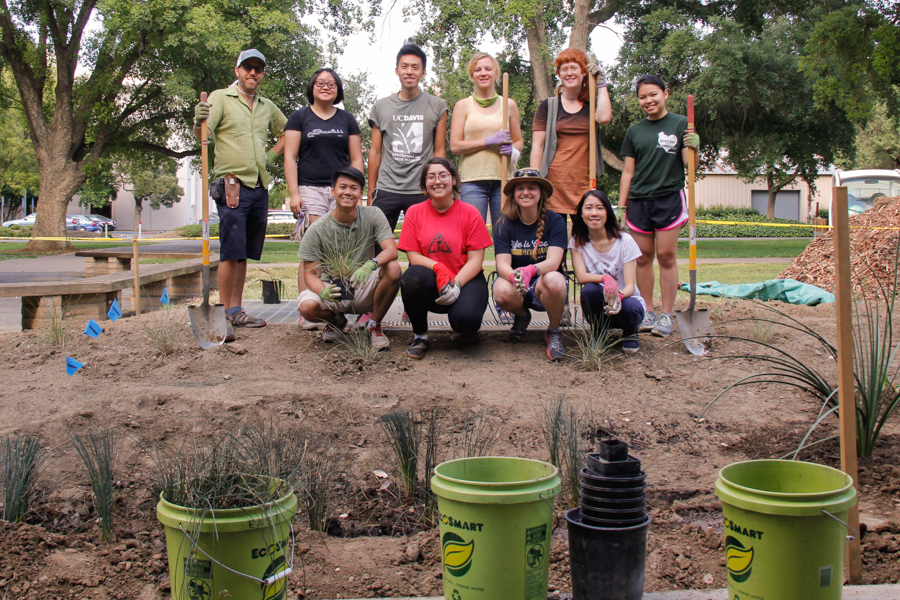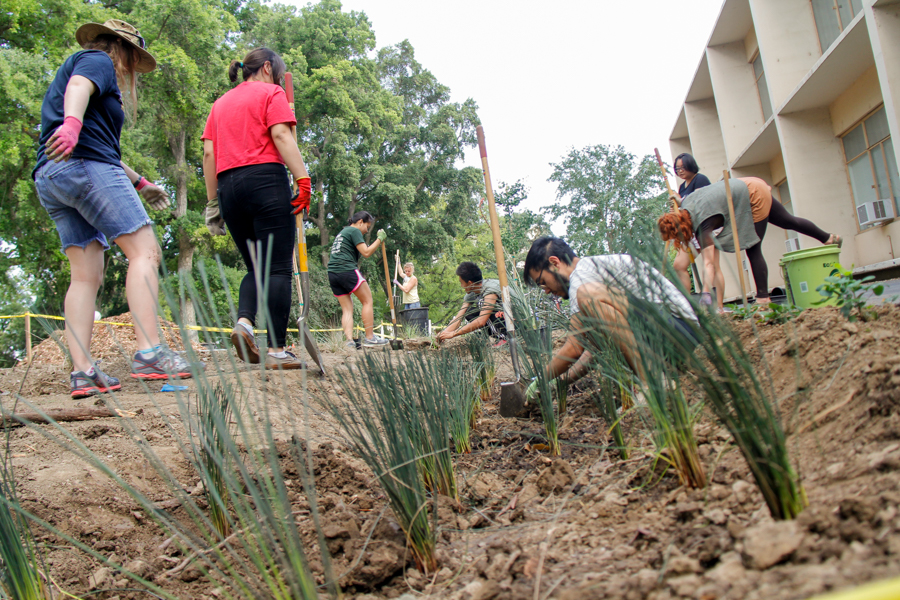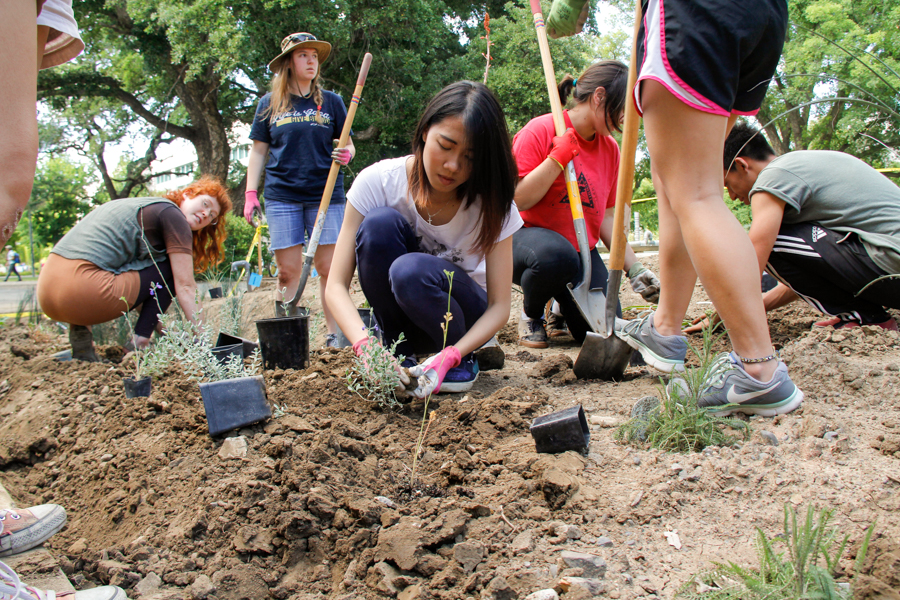
Lawns consist of low-maintenance, low water-using plants to combat California drought
Recently, the UC Davis Arboretum Leading by Learning (LxL) horticulture student interns converted a grass turf near the south side of Peter J. Shields Library. Also, on May 25, interns completed a second on-campus sustainable garden in front of Everson Hall.
The new sustainable garden next to Shields Library will use 75 percent less water than the original lawn and consists of plants that are well-adapted to the Davis climate. The plant selections are also intended to create a better habitat for native wildlife and to provide food to pollinators and beneficial insects. Compared to the original lawn, the garden will be low-maintenance and will not need fertilizing or mowing.
“We are delighted with the work that the students from the [LxL] Program have done to convert part of the lawn outside Shields to a sustainable garden,” said university librarian MacKenzie Smith. “As California’s drought continues, it’s important that all of us on campus do our part for water conservation.”
The sustainable garden includes plants from the Arboretum All-Star program, which lists the 100 best plants for the area, ranging from trees to ornamental grass to flowering plants. The plants utilized include toyon, California fuchsia, blue note sage, and octopus agave.
“We wanted to choose plants that are low-maintenance and require minimal water,” said Kathleen Geurtze, the sustainable horticulture internship co-coordinator. “We also chose mostly pollinator plants and we took into consideration the blooming times for the plants, so all year-round there is always something blooming.”
Ryan Deering, a GATEways horticulturist and program mentor, said that Campus Planning has been working on a campus map of different landscape types and uses. The sustainable gardens focus on the patches of lawn not used for recreation, so the Quad and Mrak Hall lawn are exempted.
“[There] was a spot next to the library that was small and visible with a lawn that no one was using for anything,” Deering said. “We are looking at a spot near Everson Hall, where the lawn got damaged during an expansion of the bike parking.”
Terence Wu, a fourth-year sustainable environmental design major and sustainable horticulture intern, said the sustainable gardens were created to combat the California drought.
“It is known that conventional grass lawns require an unsustainable amount of water, especially in California’s drought, and I believe that a change in vegetative composition would decrease water demand, provide habitat for pollinator species, and provide aesthetic pleasure,” Wu said.
Steffi Sin, third-year landscape architecture major and sustainable horticulture intern, found the visibility of the sustainable gardens to be one of her favorite facets of the projects.
“My favorite aspect of these projects is how visible they are to the community,” Sin said, “This allows topics such as lawn conversions, water management practices, and sustainability in landscapes to be a more talked-about subject, which helps bring awareness to how many different ways there are to improve the environment.”


Written by: Yvonne Leong – campus@theaggie.org



